|
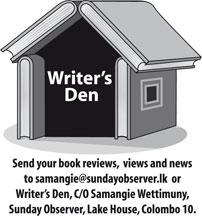
Impact of lifestyle on civilisation
Reviewed by Padma EDIRISINGHE
It is almost superfluous to state that a country's civilisation need
not be necessarily charted through its religious edifices and cultural
artefacts alone. The facets that subscribe to an advanced civilization
are almost multitudinous.
To put it bluntly, perhaps to the dismay of the flambeau holders of
the higher aspects of civilization, the religious and cultural
efflorescence of a country plays second fiddle to the basic facets that
form the life blood of a nation.
 Among these are agriculture, irrigation, animal husbandry and
fisheries on which ancillary and more sublime facets super impose
themselves. Among these are agriculture, irrigation, animal husbandry and
fisheries on which ancillary and more sublime facets super impose
themselves.
It is these basic facets of Lanka's civilization that have formed the
focus of the roving intellectual mind of no less a person than an
emeritus Professor of history, i.e. Prof. W. I. Siriweera. Through three
years of painstaking research he takes us into a hidden world that
traces the genesis and early evolution of traditions so dear to the Hela
race and other races that chose to make this country their home.
If the springs of civilization of the major race predominate in the
text it could be argued that it is not due to racial prejudice but due
to the inevitable result of the Helas constituting the majority hence
exerting the heaviest pressure on the course of development. The author
though he depends mostly on the actual observations in the terrain where
these changes were orchestrated, almost in equal proportion produces a
list of academic sources and literary works that buttress his facts.
In this aspect the book serves an additional purpose in that it
serves as a compendium of such sources that beam a powerful light on the
study of traditional practices and technologies in agriculture, animal
husbandry, irrigation and fisheries.
These sources are as diverse as Papachchasudani by Buddhagosha Thera,
Saddhamma Ratnavaliya, Pujavaliya, Kethaka Mahima by P. Kahandagamage,
Historical Relations by Robert Knox,
An account of the Island by Emerson, Tenant and the Karawas of Ceylon
by M. D. Raghavan. This is just a miniscule profile of the hundreds of
written sources of ancient, medieval and modern times that the author
has made use of which contribute immensely to the authenticity of the
content matter as these are almost first-hand snippets of information
supplied.
The book has made its debut at a fitting time when we have just
survived a catastrophic dilemma that nearly dismembered the island
serving a soul-rejuvenating service in this aspect. The author with
admirable academic restraint rhapsodizes on our ancient civilization,
especially on its amazing irrigation works. Here is one instance.
"In the anicut built in the middle Anuradhapura period across the
Malvatu Oya ....a cement mixture has been used. Scientific analysis has
shown this concrete to have superior properties to the mortar used by
the Romans, which had long been accepted as being the best ancient
product" (ref.-R. L. Brohier. "Food and the People".)
The book further supplies a fascinating window on the different modes
of livelihood in the island, the variety intensified by different living
modes of varied ethnic groups and even sub-groups within the same
community. The Karawa community thus earns mention due to the
spectacular pattern of the life of most of them as fishers.
The water lifting devices of Jaffna spotlighting water management
practices in the peninsula have riveted much of the author's attention.
Who goes on to portray the actual placid peninsula culture turned within
the last 30 years into a bloody mayhem.
The wealth of information given on sea vessels in ancient and
medieval times is vast while the author almost unintentionally seems to
explode the myth that our ancestors depended solely on agriculture for
economic development.
A flourishing trade in pearls has been practised, the breeding
grounds of the pearl oysters sited on the rocky banks of the sea a few
kms. away from places as Mannar, Jaffna, Balapitiya and Negombo and
Tambalagam lagoon on the East coast. A complex of buildings had been set
up on the banks before fishing for pearl-carrying oysters commenced.
Here we get a glimpse of a bristling business Lankan community in those
far off days with eyes focused on incoming sea vessels from lands far
away, bringing in clientele to burgeon the island economy...
Welcome to reading "Tradition and livelihood".
You are in for many surprises and vibrant reading put across in an
unpretentious style that shields the professor in the guise of a simple
narrator yet putting across a wealth of highly academic matter. The
cover in itself takes the reader away from the grim veneer of a
professional production.
The book has been published by the National Science Foundation of Sri
Lanka and its director in the foreword opines that one of the chief
services of this work has been the documenting of traditional practices
and technologies before some of them recede into complete oblivion.
Many spangled creative innovation
"Balancing the World"
By Michelle Karunaratne
Reviewed by Carl Muller
In 1975 Paul D. Maclean, Chief of the Laboratory of Brain Evolution
in Maryland, USA, pointed out that there lay in the human creative
process an interplay that he called "Bisociation" - making a distinction
between the routine skills of thinking on a single plane and the
creative act. As he explained: "The Creative Act connects previously
unrelated dimensions of experience. It is an act of liberation and habit
is defeated by originality. Also, it involves levels of the mind
separated by a much wider span than in any other mental activity."
This may be no way to begin what I hope to be a study of a book
written by Michelle Karunaratne who began writing when she was thirteen;
but I'm taking a serious look at a production that holds fast to Paul
Maclean's Bisociation. There's a valid reason for this. What we now
have, a-sprawl before us are books written by what we, for the sake of
propriety, (if that be the word) call "good". What jars, of course, is
the manner in which the big "I" crawls in and takes possession in all
the lines so ardently spouted. What are these authors trying to do?
Raise themselves, their achieving conceiving lives, their very reason
for living, to be impressed, be reverential of the fact that the author
has produced poems of their experiences in Italy or Belfast or Australia
or the USA.
Of course, this is much a part of the writing that comes out of
biography, autobiography, shoulder-rubbing, satisfaction of raising
one's head a couple of centimetres higher and acknowledging the
sissy-sassy cheers of a foot-licking multitude. Put one of them at a
podium and they tell of "MY book" and "I shall read now from MY book"
and make it crystal that the book they have written is Theirs and none
other's.
The system has taken a stranglehold today, "I", "me", "mine"...my
visits, my family, my travels, the kangaroos I hopped with, the huge
importance of my kith and kin, the secrets I keep and those I find
convenient to reveal, the great families I am part of, the awards I have
received, the constellations I govern... Theirs the ultimate reality.
So there! Having got this off my chest, let me now also remind that
so many of the finest writers of today and many yesterdays ago
understood and accepted the finest writing of the past. What Michelle
Karunaratne has done is taken the pith of Greek mythology, the invisible
ink of some oceanic wonder, and made her readers aware of the fact that
she is doing what she is determined to do - not what we feel she is not
doing. The idea of "Balancing the World" is something as various and as
many-sided as Arthur Koestler's idea of breaking all elementary literary
rules. I could not help feeling that Michelle, having soldiered for a
while in the "Sunday Island" newspaper with that excellent guru, Manik
de Silva to give her some guidance ("but not too much", he told me,
"because hers is a dimension we rarely trespass in") has now found
herself in a career that she has to pursue - and not just to write
book-after-book-after-book, but to think that everything she writes will
be no humdrum aftermath but bring forth a newer stage in her
development.
History, we are told is a new branch of literature - but to take the
marvellous legends of the Mediterranean and blend them to become a
"something else" focus of man, both picaresque and picturesque, is
something not often, indeed rarely, encountered in Sri Lankan writing.
But stay. There is Merlin Peris and his "Greek Story Motifs in the
Jatakas" and we see how wonderfully he has presented his case. In
Michelle we have both pulsing breadth and unity of purpose as the
characters glide together as Puck once did no Pook's Hill - even if
Kipling had no god to tell his sons to pick straws!
It is not my intention to run through this book chapter by chapter. I
leave that to you readers because that's the cherry on the cake; but I
want to remind you to read with more than a mere run-through. A careful
study of a plot that is not easy to find will tell you of a
many-spangled creative innovation.
Michelle has refertilised and reinvigorated the ancient soil of
star-encrusted space, the underworld of Cronus, and, like a five-in-one
blow, tailor-made her space-earth environment to fit us.
There is no rationalising of age-old attitudes and how we act today.
She is not boring us with the irrationality of the attitudes and
conformities of today. What you will find is an underlying consonance -
both youthful genius and the commonsense of the child. What I would also
point out is the book's staying power. OK, so she may have taken a long
draught of infinity but as you will see, she is not (repeat not)
involved. She is not going to be a part of her writing and this is what
makes the book so unique. Nor will you find any superficial form of
reader-persuasion either.
As Goronwy Rees once opined: Habent sua fata Libelli - "Books have
their own destinies" - and if one could apply this to all the books
written in Sri Lanka, how many, pray tell, have assumed a life of their
own? Cooped within our own perimeter, can we truly understand the ideas
and controversies that agitated readers in Bunyan's day? Michelle has
ironed out all such probabilities.
She has taken the myths and fables concerning the human and godly and
introduced them to the more understandable heroes of today - and given
us quite a level playing field.
I'll say no more.
Let me instead add that this is a book for old and young. It is not
meant to shock. It is meant to entertain and also stand tall as a new,
fluent, neat and most informative production.
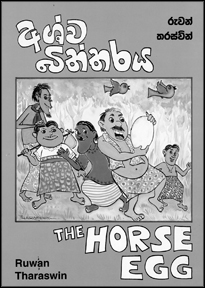 Mahadenamutta rides again Mahadenamutta rides again
by R. S. Karunaratne
Mahadenamutta and his pupils have entertained both the young and the
old for many generations. Although he and his pupils were imaginary
characters, we have begun to treat them as real people.
Although many stories of Mahadenamutta and his pupil are in
circulation, very few books have been written in English. "The Horse Egg
fills this gap to a certain extent. Tharaswin's Sinhala story has been
translated by Malini Govinnage who is a bilingual writer.
The simple story is aptly illustrated in colour by Tharaswin who won
a medal for the book at the Seventh Noma Concours International
Children's Book Illustrations Competition held in Japan in 1990.
Tharaswin and Govinnage deserve kudos for their effort to entertain
and enlighten the younger generation.
A study of the peoples and languages of Sri Lanka
ZEYLANICA. A study of the Peoples and
Languages of Sri Lanka **by Asiff Hussein
Publisher: Neptune Publications (Pvt) Ltd,
Pages: 455 pp plus 27 colour plates
Price: Rs.950
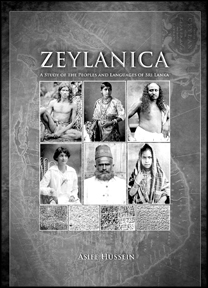 ZEYLANICA. A study of the Peoples and Languages of Sri Lanka by Asiff
Hussein is by far the most comprehensive study of the origins of the
peoples and languages of Sri Lanka undertaken to date. The author has
employed a multi-disciplinary approach in this work to trace the origins
of the races which have made Sri Lanka their home over the centuries and
millennia, adducing evidence from historical geography, physical
anthropology, archaeology, linguistics and even the exciting new science
of genetics. ZEYLANICA. A study of the Peoples and Languages of Sri Lanka by Asiff
Hussein is by far the most comprehensive study of the origins of the
peoples and languages of Sri Lanka undertaken to date. The author has
employed a multi-disciplinary approach in this work to trace the origins
of the races which have made Sri Lanka their home over the centuries and
millennia, adducing evidence from historical geography, physical
anthropology, archaeology, linguistics and even the exciting new science
of genetics.
The ethnic groups covered in this survey include both the major
communities as well as minor groups who have made Sri Lanka their home
over the centuries including the Veddas, Sinhalese, Tamils, Moors,
Malays, Memons, Portuguese and Dutch Burghers, Kaffirs and Ahikuntaka.
He has also dealt with the legendary peoples who are supposed to have
once inhabited the country including the Raksasas, Yakkhas, Nagas and
Nittavo.
The author has gathered around him a vast corpus of information from
ancient literature, research studies and field work, not only to
substantiate established facts, but more importantly, has postulated
some new theories which should stimulate further research and inquiry
into this fascinating subject.
Available at Vijitha Yapa, Lake House, Barefoot, Odel, Sarasavi and
Serendib Bookshop
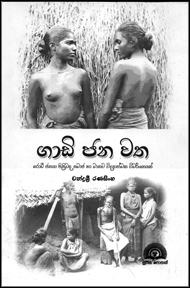 Gadi Jana Vatha Gadi Jana Vatha
Chandra Sri Ranasinghe's 'Gadi Jana Vatha' is a socio-ethnological
study on the Rodiya caste of Sri Lanka. It appears to be a sequel to M.
D. Raghavan's much-publicised book Handsome Beggars: The Story of the
Ceylon Rodiyas."
The author discusses the origins of the Rodiyas, their cultural
traits, and the challenges faced by them today. In other words, 'Gadi
Jana Vatha' is a saga of the Rodi people. The book is a Sooriya
publication.
Let's learn Chinese
Ven. Dr. Nedalagamuwe Dhammadinna Thera, Senior Lecturer of Chinese
at Kelaniya University has authored the following three books for the
benefit of GCE (A/L) students who offer Chinese langauge as a subject in
2001: Modern Chinese Culture and Life Styles, Chinese language manual
for GCE (A/L), Chinese language words. These books contain Sinhala and
Tamil equivalents for the Chinese word. They are available with the
Kelaniya University Modern Languages Department.
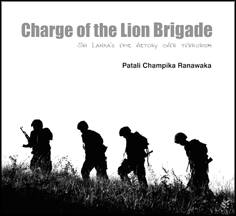 Charge of the Lion Brigade Charge of the Lion Brigade
"Charge of the Lion Brigade", a theoretical analysis of Sri Lanka's
epic victory on terrorism penned by Minister of Environment and Natural
Resources Champika Ranawaka, was launched last week at the BMICH by
Defence Secretary Gotabhaya Rajapaksa.The book explores both
international and exclusively Sri Lanka's war strategy adapted by the
Sri Lanka forces in its historical victory over ruthless LTTE terrorism.
In his analysis Minister Ranawaka has compared and contrasted the local
scenario with a number of International case studies including that of
France, Vietnam, India, Russia, U.S.A. and Britain. The book also
carries an introduction on modern nationalistic movements in Sri Lanka.
Tips for a healthy heart
Suwabara Diviyakata Nirogee Hadawathak
K.W.A. Jayawardene
Printed by Pragathi Creations, Homagama
Price: Rs. 250 Second Edition
The book contains details of various concepts about heart, functions
of heart, symptoms, methods of treatment, first aid and preventive
measures.
The updated edition also includes a new chapter "meditation, yoga
exercises and heart diseases."
|

